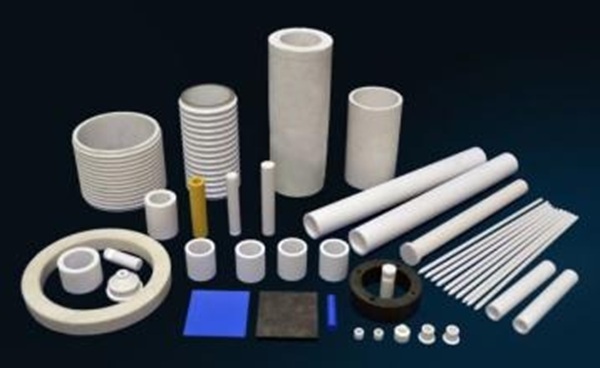Zirconia Ceramics: Properties for Engineering Applications
Introduction
Zirconia ceramics (ZrO₂), or zirconium dioxide, are advanced materials known for their mechanical strength, thermal stability, and electrical insulation. Available in standard (95% ZrO₂) and toughened (85% ZrO₂) forms, these ceramics are ideal for engineering applications. This article details the key properties of zirconia ceramics, supported by a comparative table, to highlight their suitability for engineering solutions.
Properties of Zirconia Ceramics
Zirconia ceramics offer a range of mechanical, thermal, electrical, and chemical properties, making them suitable for demanding engineering applications. Below are their primary characteristics:
- High Hardness: Vickers hardness ranges from 12.3 GPa (standard) to 16.0 GPa (toughened), ideal for wear-resistant components.
- Mechanical Strength: Flexural strength from 500 MPa (toughened) to 1000 MPa (standard), suitable for load-bearing applications.
- Low Thermal Conductivity: Ranges from 7.0 W/mK (toughened) to 10.5 W/mK (standard), supporting thermal insulation.
- Electrical Insulation: Volume resistivity >10¹³ ohm-cm, ensuring reliability in electronic systems.
- Corrosion Resistance: Minimal weight loss in acids (0.46 mg/cm² in H₂SO₄), perfect for harsh environments.
Detailed Properties Table
The table below compares the properties of standard zirconia (95% ZrO₂) and toughened zirconia (85% ZrO₂).
| High toughness, insulation, and thermal conductivity | 95% ZrO₂ (Standard) | 85% ZrO₂ (Toughened) |
| Main Characteristics | ||
| Color | Black | Yellow |
| Main Applications | High thermal conductivity, corrosion resistance | General use |
| Characteristics | High toughness, insulation, thermal conductivity | High toughness, insulation |
| Mechanical Properties | ||
| Bulk Density (g/cm³) | 6.0 | 4.15 |
| Water Absorption (%) | 0 | 0 |
| Vickers Hardness (GPa) | 12.3 | 16.0 |
| Flexural Strength (MPa) | 1000 | 500 |
| Compressive Strength (MPa) | 2580 | 1750 |
| Young’s Modulus (GPa) | 200 | 337 |
| Poisson’s Ratio | 0.31 | 0.23 |
| Fracture Toughness (MPa m¹/²) | 4–5 | — |
| Thermal Properties | ||
| Thermal Conductivity (W/mK) | 10.5 | 7.0 |
| Thermal Shock Resistance (ΔT°C) | 300 | 450 |
| Coefficient of Thermal Expansion (10⁻⁶/K) | 10.5 | 7.0 |
| Electrical Properties | ||
| Volume Resistivity (ohm-cm) | >10¹⁴ | >10¹³ |
| Dielectric Constant (1 MHz) | 11 | — |
| Dielectric Strength (kV/mm) | 33 | 26 |
| Chemical Properties | ||
| Weight Loss in H₂SO₄ (mg/cm²) | 0.46 | 0.46 |
| Weight Loss in NaOH (mg/cm²) | 300 | 450 |
Table Notes:
- Mechanical Properties: Toughened zirconia’s higher Young’s Modulus (337 GPa) indicates greater stiffness.
- Thermal Properties: Toughened zirconia’s superior thermal shock resistance (450°C) suits applications with temperature fluctuations.
- Electrical Properties: Standard zirconia’s higher dielectric strength (33 kV/mm) enhances insulation performance.
Conclusion
Zirconia ceramics, in standard (95% ZrO₂) and toughened (85% ZrO₂) forms, offer exceptional hardness, strength, thermal stability, and electrical insulation, making them ideal for engineering applications. The differences between variants allow for tailored solutions in demanding environments.
Advanced Ceramics Hub is a leading manufacturer and supplier of high-quality zirconia ceramic products in form of plates, sheets, rods, tubes, crucibles, substrates, and customized parts, offering customized solutions for various industrial and research applications.

